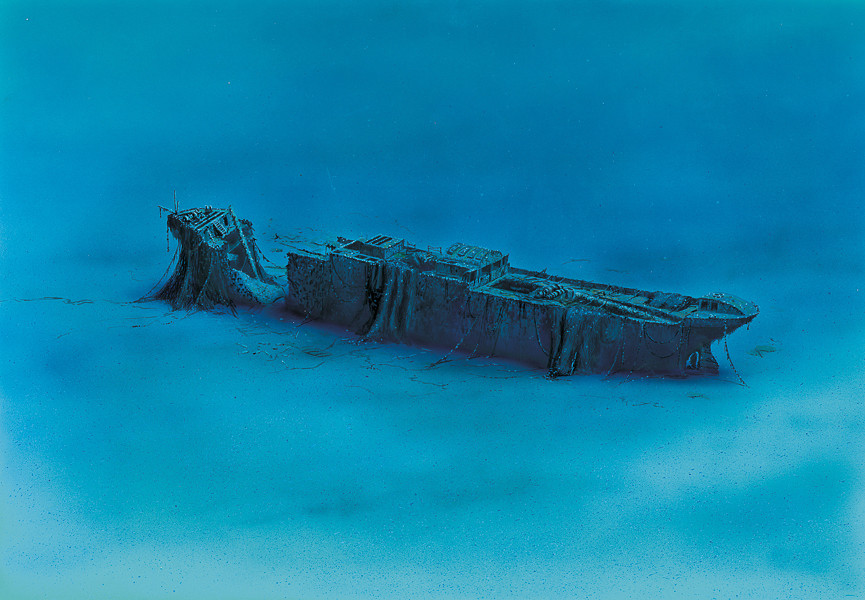
HANS SCHMIDT
DEPTH: 30 - 41 m
SKILL: Advanced
Hans Schmidt (ex-Albireo); cargo steamship; Heinrich Schmidt, Flensburg, Germany
Built: 1920
Sunk: 24th January 1943 (mine)
Dimensions: l=112.8 m, w=15.3 m, h=6 m
Coordinates: 44.90488° N, 13.58720° E
Location: south west of Pula
Access: 2/5 access is possible only by boat
Visibility: 2-3/5 weak to good, only occasionally very good
Current: 4/5 mostly weak
Flora and fauna: 4/5 varied life on and around the wreck, occasionally specimens of large fish
HISTORY:
Twenty years ago divers in the open sea west of the Istrian coast found the wreck of a cargo steamship with a steel hull. The bow section was severely damaged and this indicated that the ship had been damaged as the result of a mine or bombing by aeroplanes. Only after some time the famous Italian underwater explorer Mario Arena from Trieste confirmed that it was the steamship Hans Schmidt. Not much data about this steamship exists. It is known that it was built in the Netherlands in the New Waterway shipyard in Schiedam for the client NV Van Nievelt, Goudriaan & Co. Scheepvaart Mij. It was launched on 6th December 1919, and that it was completed in February 1920 and that its original name was the Albireo. It was sold in 1939 when the owner became Heinrich Schmidt from Flensburg and the ship was renamed as the Hans Schmidt. It came across a mine and sank on 24th January 1943 near Pula. To date we have not found any other information about this ship.
WRECK CONDITION AND DIVING:
Diving in the open sea is always linked to certain risks due to weather conditions so standard preparations are also necessary for diving on the wreck of the Hans Schmidt. The descent to the wreck is only possible when the position of the ship is determined mainly because of poor visibility, whilst an anchoring rope is secured to the wreck. Once into the dive, with a little better visibility it is possible to realise the complete size of this ship. The ship lies in an upright position, and its steel hull is almost completely undamaged, with the exception of the stern sections. Namely, at the height of the rear cargo hold the ship’s hull is so torn that the bow is almost completely separated from the rest of the ship. The mine exploded high in the rear cargo hold, damaging the ship so much that it surely sank within a few minutes. On the seabed not far from the front cargo holds are scattered objects whose shapes are very reminiscent of the aerial bombs of Italian origin. On the last sections there is a stabilising fin and ring-shaped stabiliser. It is not sure whether the bombs belonged to the ship’s cargo, since they were not found in the interior of the ship’s cargo hold. In any case, there is no need to touch them since many explosives are still dangerous even today.
From the central superstructure nothing much remains, which is quite unusual. There still exists the possibly that the ship presents danger for navigation and so professional divers have partially mined it so as to lower its tallest parts – the masts, funnel and bridge. Below the stern the ship’s rudder and propeller can be seen half buried in the sand. Over all sections of the ship there are many remains of old nets which trawlers have lost long ago, and so lingering in the interior of the ship is not recommended. On the ship can be encountered larger specimens of conger eels, and around the ship shoals of smaller fish constantly gather.
The description and illustrations are a courtesy of Danijel Frka and Jasen Mesić. Buy the whole book here: https://shop.naklada-val.hr/product_info.php?products_id=561
Built: 1920
Sunk: 24th January 1943 (mine)
Dimensions: l=112.8 m, w=15.3 m, h=6 m
Coordinates: 44.90488° N, 13.58720° E
Location: south west of Pula
Access: 2/5 access is possible only by boat
Visibility: 2-3/5 weak to good, only occasionally very good
Current: 4/5 mostly weak
Flora and fauna: 4/5 varied life on and around the wreck, occasionally specimens of large fish
HISTORY:
Twenty years ago divers in the open sea west of the Istrian coast found the wreck of a cargo steamship with a steel hull. The bow section was severely damaged and this indicated that the ship had been damaged as the result of a mine or bombing by aeroplanes. Only after some time the famous Italian underwater explorer Mario Arena from Trieste confirmed that it was the steamship Hans Schmidt. Not much data about this steamship exists. It is known that it was built in the Netherlands in the New Waterway shipyard in Schiedam for the client NV Van Nievelt, Goudriaan & Co. Scheepvaart Mij. It was launched on 6th December 1919, and that it was completed in February 1920 and that its original name was the Albireo. It was sold in 1939 when the owner became Heinrich Schmidt from Flensburg and the ship was renamed as the Hans Schmidt. It came across a mine and sank on 24th January 1943 near Pula. To date we have not found any other information about this ship.
WRECK CONDITION AND DIVING:
Diving in the open sea is always linked to certain risks due to weather conditions so standard preparations are also necessary for diving on the wreck of the Hans Schmidt. The descent to the wreck is only possible when the position of the ship is determined mainly because of poor visibility, whilst an anchoring rope is secured to the wreck. Once into the dive, with a little better visibility it is possible to realise the complete size of this ship. The ship lies in an upright position, and its steel hull is almost completely undamaged, with the exception of the stern sections. Namely, at the height of the rear cargo hold the ship’s hull is so torn that the bow is almost completely separated from the rest of the ship. The mine exploded high in the rear cargo hold, damaging the ship so much that it surely sank within a few minutes. On the seabed not far from the front cargo holds are scattered objects whose shapes are very reminiscent of the aerial bombs of Italian origin. On the last sections there is a stabilising fin and ring-shaped stabiliser. It is not sure whether the bombs belonged to the ship’s cargo, since they were not found in the interior of the ship’s cargo hold. In any case, there is no need to touch them since many explosives are still dangerous even today.
From the central superstructure nothing much remains, which is quite unusual. There still exists the possibly that the ship presents danger for navigation and so professional divers have partially mined it so as to lower its tallest parts – the masts, funnel and bridge. Below the stern the ship’s rudder and propeller can be seen half buried in the sand. Over all sections of the ship there are many remains of old nets which trawlers have lost long ago, and so lingering in the interior of the ship is not recommended. On the ship can be encountered larger specimens of conger eels, and around the ship shoals of smaller fish constantly gather.
The description and illustrations are a courtesy of Danijel Frka and Jasen Mesić. Buy the whole book here: https://shop.naklada-val.hr/product_info.php?products_id=561

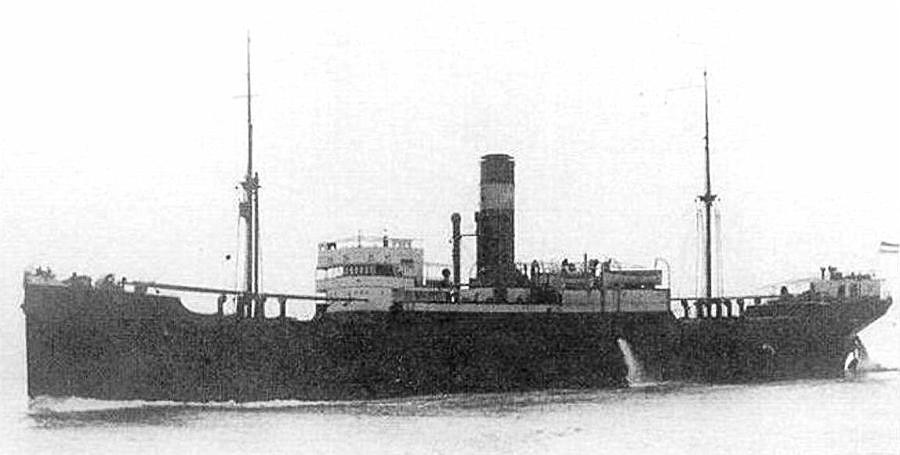
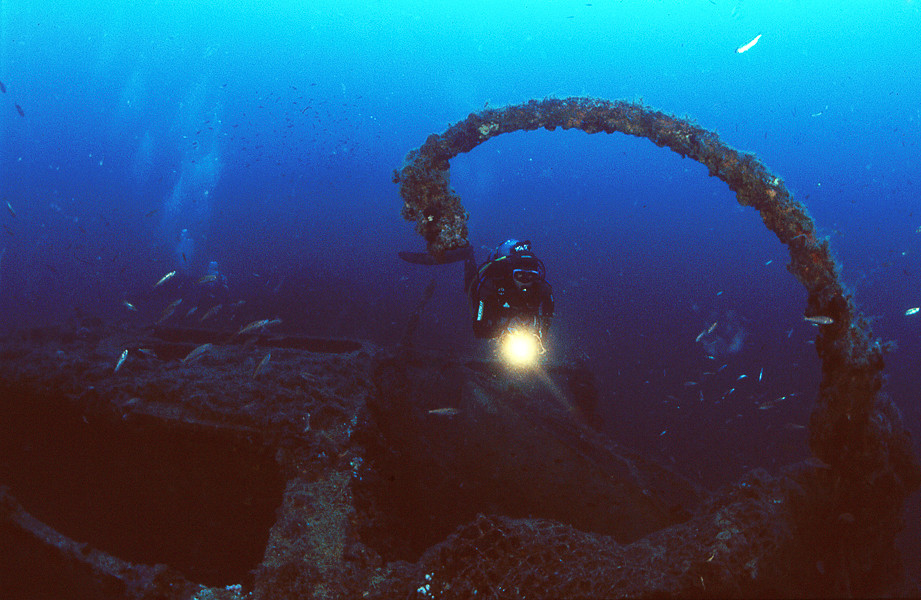

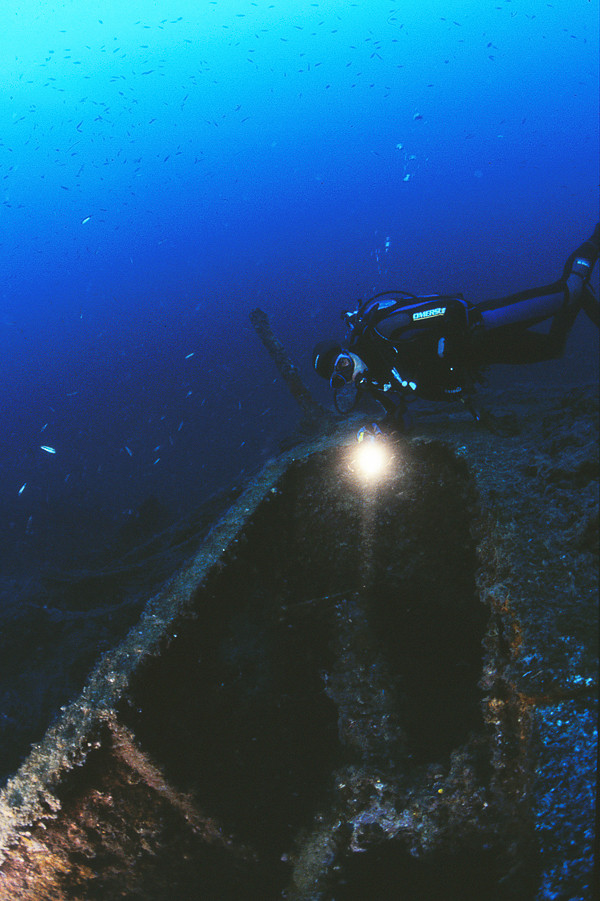
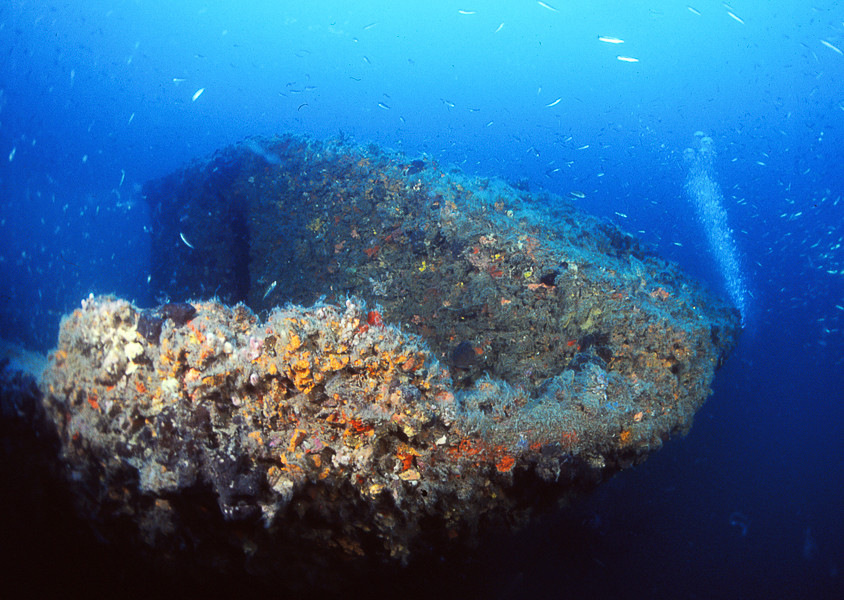

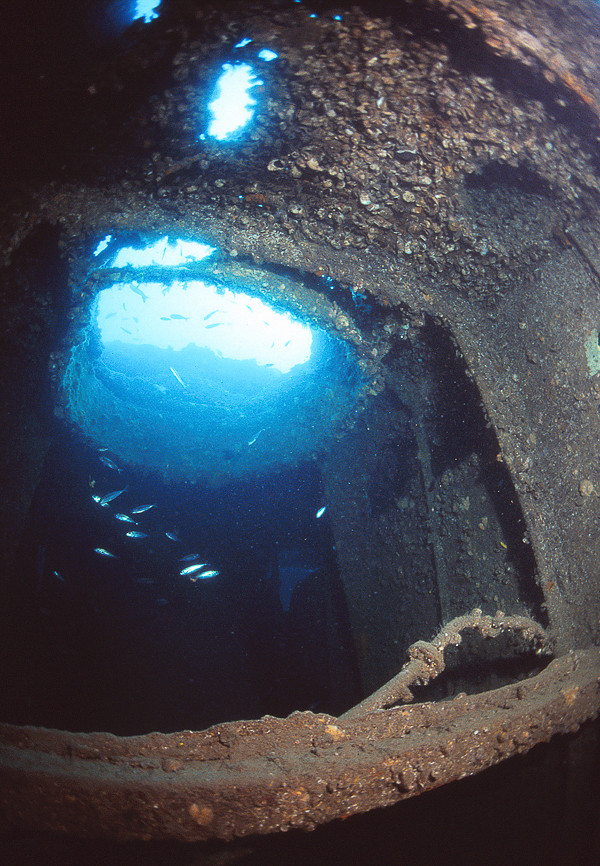
 The investment is co-financed by the Republic of Slovenia and the European Union from the European Regional Development Fund.
The investment is co-financed by the Republic of Slovenia and the European Union from the European Regional Development Fund.  H2O Globe BETA
H2O Globe BETA